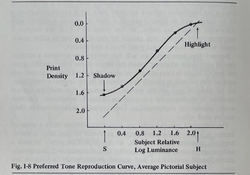One other aspect of film performance photographers like to talk about is perceived sharpness and acutance. To do a proper quantitative analysis of sharpness and acutance, one would need very expensive instrumentation. What we can do, instead, is use words and pictorial examples to talk about sharpness.
What types of films, developers, and techniques have you guys seen to produce the most pronounced or pleasing sharpness and acutance effects?
The most comprehensive photography-focused (as opposed to sensitometry-focused) book on sharpness I can think of is Barry Thornton's Edge of Darkness (Amphoto Books, 2001), which I already mentioned in this thread. He devotes a considerable part of his book to describing various techniques that are meant to help photographers achieve the sharpest-looking prints possible. He says:
"There is a way to make acutance look even greater by use of enhanced edge effects. Metol has an especially useful characteristic to help this. When used in dilute form, at the edges of varying tone, it creates adjacency effects and sometimes forms what are known as Mackie lines." (p. 89)
Later, he goes on to add:
"The effect is particularly marked when the developer doesn't use a potassium bromide restrainer. It is a fact that P-Amidophenol developers like Rodinal are good at producing edge effects, but their grain is particularly pronounced." (p. 90)
His pursuit of sharpness and acutance had lead him to formulate his own developers, some of which are still in use today. I have also noticed some of these types of effects in my work, as I am sure a lot of you have, as well. The most pronounced effect I have ever come across has been in Pyrocat HD 1+1+200 using semi-stand agitation. The films most prone to this effect, I found, are Fujifilm Neopan 400, KODAK TRI-X 400, and KODAK T-MAX 400. I am sure other films would also produce this effect, but I haven't tested them.
Here's a recent photograph I took on TMY-2, processed in Pyrocat HD 1+1+200 for sixty minutes using semi-stand agitation (2 minutes continuous, followed by 30 minutes stand, 2 inversions at the half-point, followed by 30 minutes stand, using water stop bath, and Formulary TF-4 fixer). Pyrocat HD does include potassium bromide. I am not a chemist, and I wouldn't dare dispute Thornton's account.
I digitized the negative with my phone, inverted in Vuescan, with default settings for a generic negative, with no unsharp masking applied. I am not sure I like the effect, but there's no denying the fact that it does impart a particular character or mood, doesn't it?
 TMY-2_400_PyrocatHD_60_semi-stand
TMY-2_400_PyrocatHD_60_semi-stand by
Nick Mazur, on Flickr

















 .
.
